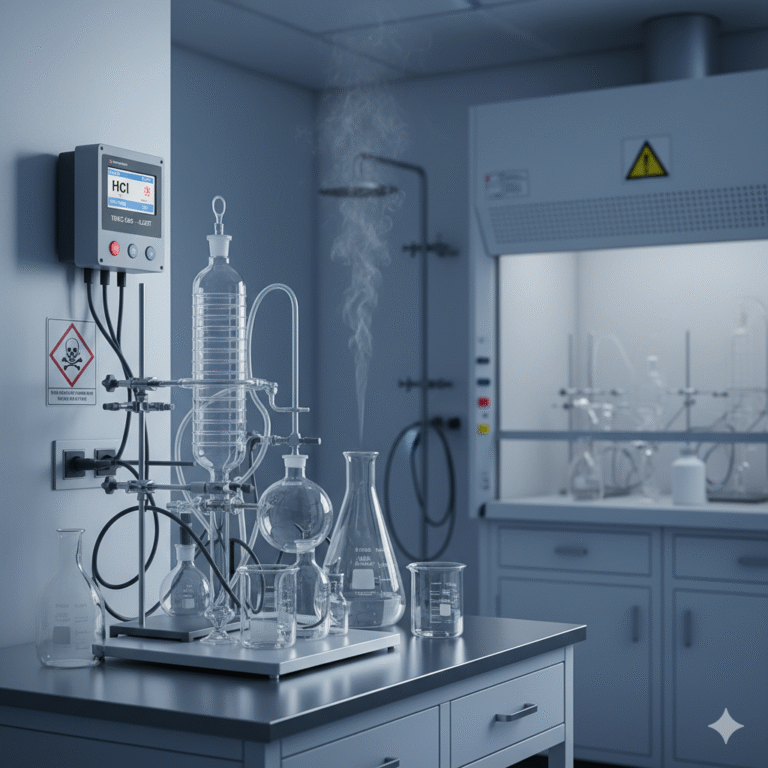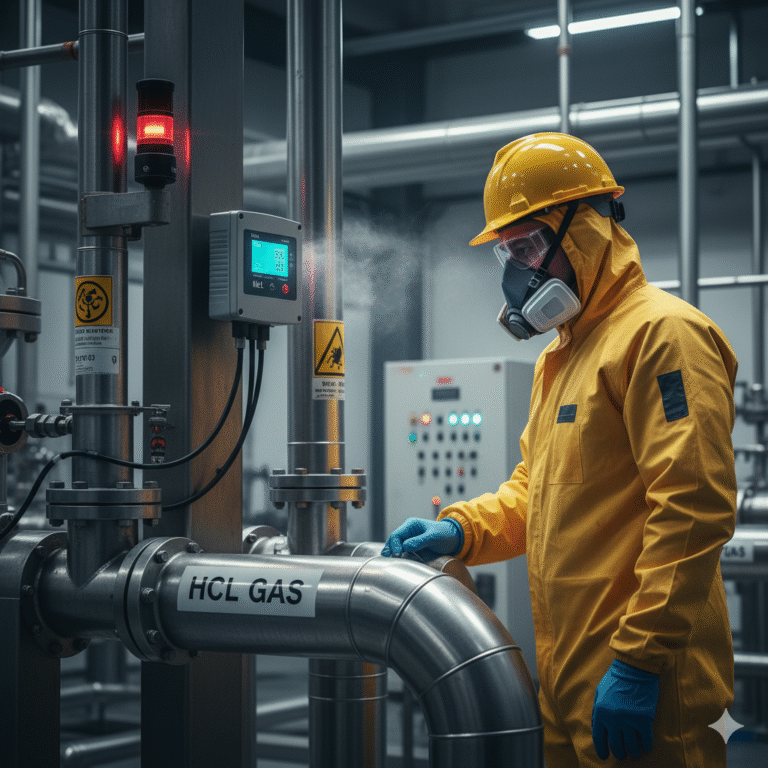Hydrogen chloride (HCl) gas is classified under “acute toxicity – inhalation, category 3*” according to national standards. However, in practical terms, it is “not recommended” to set it up as a toxic gas for monitoring. Why is it that hydrogen chloride in its gas form is treated differently from its liquid form, like hydrochloric acid (HCl)? This article will clarify the controversy and truth behind HCl gas monitoring, based on regulations, classifications, and practical examples.
1. Regulatory Classification of HCl Gas
According to the GB/T 50493 standard, which defines toxic gases, and the Hazardous Chemicals Classification Table, HCl gas (CAS 7647-01-0) falls under “acute toxicity – inhalation, category 3*”. The asterisk (*) indicates that this classification could potentially be upgraded based on substantial evidence, regulatory requirements, or the owner’s safety demands. If there is sufficient evidence or if local regulations require it, it may be classified as a toxic gas.
However, hydrochloric acid (CAS 7647-01-0) does not have the same acute toxicity classification. Why, then, does HCl gas pose a potential toxicity risk while concentrated hydrochloric acid does not? This is an important distinction that deserves further exploration. One reason is that substances like fluoride compounds or beryllium compounds are specifically included in high-toxicity listings, while HCl does not fall under the same category.
Some standards do call for HCl to be treated as a toxic gas. For example, in the GB 51034-2014 “Polycrystalline Silicon Plant Design Code,” section 6.2.8 specifies that gas detection instruments should be designed in accordance with the current national standard “Petrochemical Flammable and Toxic Gas Detection and Alarm Design Standards” (GB 50493). This standard recommends the use of a toxic gas detector for hydrogen chloride when detecting leaks of silicon chlorides such as silicon tetrachloride (SiCl4) or trichlorosilane (SiHCl3). The reason for this is that silicon chlorides decompose easily in the presence of water, releasing HCl gas and hydrogen.

2. The Practical Application of HCl Gas Monitoring
In practical settings, HCl gas should be set up as a toxic gas detector in cases where there is a need for high safety standards or where regulatory authorities require it. For instance:
Hydrogen Chloride Gas: If the safety requirements of the owner or regulatory guidelines demand it, HCl gas should be monitored with a toxic gas detector.
Hydrochloric Acid: Hydrochloric acid, according to the hazardous chemicals directory, is not considered acutely toxic, and it is unnecessary to monitor it as a toxic gas. Leaks of hydrochloric acid typically occur in liquid form, which can be detected through regular inspection. The potential harm to personnel from hydrochloric acid leaks is limited. Furthermore, corrosion caused by acid leaks to surrounding facilities does not justify treating it as a toxic gas.
Polycrystalline Silicon Plants: In polycrystalline silicon plants, due to the chemical characteristics of silicon chlorides, it is necessary to monitor HCl gas as a toxic gas to detect leaks from these compounds.

3. Conclusion
To summarize:
HCl Gas: In environments with high safety requirements or regulatory mandates, HCl gas should be monitored as a toxic gas.
Hydrochloric Acid: As hydrochloric acid is not classified as acutely toxic, it is unnecessary to set it up as a toxic gas monitor, unless specifically required in unique cases such as acid storage facilities where liquid forms could leak.
Polycrystalline Silicon Plants: Due to the decomposition of silicon chlorides into HCl gas, toxic gas detectors should be set up to monitor HCl gas.
By understanding the nuances in classification and applying it according to specific circumstances, the appropriate monitoring practices can be implemented to safeguard the environment and personnel.
